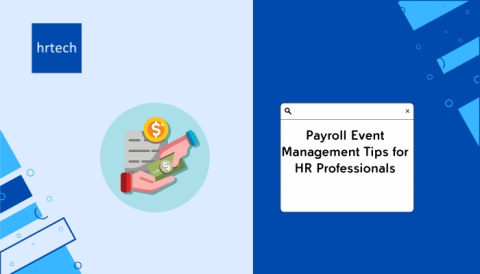Payroll is a vital function for businesses of all sizes. It influences employee satisfaction and the company’s overall financial health. Payroll errors can cost companies dearly and affect long-term growth.
A survey by EY found that companies have an average payroll accuracy rate of just 80.15%, highlighting significant errors in the process. Each error, directly or indirectly, costs the company an average of $291.
While you can quantify the monetary cost of payroll errors, there are many subjective costs that are not very apparent. For example, payroll errors may lead to poor employee engagement, which, in the long run, affects productivity. Payroll errors can also drive employees to leave, making it harder to build a loyal and dedicated workforce.
In this blog, we’ll explore the real costs of payroll errors and share effective ways to prevent them. We’ll also examine how these mistakes impact a business’s financial and operational aspects.
Common Payroll Mistakes That Hurt Businesses
One of the basic employee expectations throughout the employee lifecycle is correct and timely pay. Yet, various internal and external factors can cause errors in payroll processing. It is crucial to avoid these common payroll mistakes to meet your employees’ expectations:
1. Misclassification of Employees
Misclassifying employees is a common yet costly payroll mistake. It occurs when workers are incorrectly categorized as independent contractors rather than full-time employees, or vice versa. As the gig economy grows in popularity, classification becomes a major challenge.
Misclassification can lead to incorrect tax withholdings, missed benefits, and potential legal complications. Correct classification is crucial for both compliance and financial accuracy.
True Impact of Misclassification:
Here’s the actual impact of misclassifying employees:
- Legal penalties: Misclassification can result in fines and back taxes owed to the government.
- Employee dissatisfaction: Workers may miss out on essential benefits like health insurance and retirement plans.
- Increased audit risk: Misclassifications can trigger audits and further scrutiny from regulatory agencies.
- Reputation damage: Persistent payroll errors can damage trust and hurt your company’s reputation among employees.
2. Income Tax Withholding
Incorrect income tax withholding is a common payroll mistake that can have serious consequences. When the right amount of taxes isn’t withheld from employee paychecks, it can result in underpaid or overpaid taxes, leading to compliance issues and employee dissatisfaction.Income tax withholding also varies based on the classification of employees.
True Impact of Income Tax Withholding:
Here’s the actual impact of errors in tax withholding:
- Employee dissatisfaction leading to confusion and frustration: Employees may end up with unexpected tax liabilities at the end of the year, leading to confusion and frustration over under-withholding or over-withholding.
- Legal risks escalating into penalties: If the company withholds too little or too much, it could face penalties from the IRS for non-compliance, resulting in costly fines and interest.
- Increased administrative costs and workload: Correcting income tax withholding mistakes requires time-consuming adjustments and extensive paperwork.
- Damage to company reputation and trust: Employees may lose trust in the company’s payroll system, which can negatively affect morale and increase employee turnover.
Want to simplify payroll and reduce compliance risks? Let’s chat.
3. Failing to Track Overtime Correctly
Incorrectly logging overtime hours can lead to improper overtime payments, which may require corrections spanning multiple tax years. These errors take time to fix and can frustrate employees, especially if they are underpaid or overpaid and have to return money.
Issues in tracking overtime may arise even if you miss payments in scenarios where employees work during breaks or participate in work-related activities outside normal hours.
True Impact of Failure in Tracking Overtime
Here’s the actual impact of failure to track overtime:
- Compliance violations: Incorrect overtime payments can lead to violations of labor laws putting the business at risk of legal scrutiny and fines.
- Employee turnover: Employees who regularly face overtime issues may feel undervalued, prompting them to seek opportunities elsewhere. Also the employees’ perception of the company erodes.
- Financial discrepancies: Failing to pay overtime correctly can cause payroll imbalances, which might result in inaccurate tax filings again attracting legal consequences.
- Operational disruptions: Incorrect overtime payments can cause confusion among employees and disrupt workflow.
Looking to improve payroll management and avoid costly errors? Keka’s payroll software is a state-of-the-art solution that helps you avoid costly errors. Schedule a demo today!
To address these payroll issues and prevent costly mistakes, it’s essential to implement efficient systems and practices that ensure accuracy and compliance. Let’s understand how you can reduce these common payroll errors.
How Are Top Companies Fixing Payroll Issues?
Top companies are adopting modern solutions to streamline payroll processes and eliminate common errors. Did you know businesses using strategic payroll systems face 70% fewer compliance issues?
By automating key tasks and ensuring compliance with state-specific regulations, companies are improving accuracy and reducing errors.
Here’s how leading businesses are addressing payroll issues:
1. Automating Tax Calculations
To avoid payroll errors and ensure compliance, companies are using payroll software that automates tax calculations. Features like real-time tax updates, automatic tax form generation, and accurate deductions help streamline the process. This reduces the risk of manual errors, ensures timely tax filing, and saves valuable time.
How it works:
Here’s how automated tax calculation reduces compliance risks:
- Automatic tax calculations: Payroll software calculates federal, state, and local taxes based on the latest tax laws.
- Real-time tax updates: The system updates tax rates automatically, ensuring compliance with changing regulations.
- Tax form generation: Automated generation of tax forms ensures accuracy and timely submission.
- Deductions and exemptions: The software automatically applies correct deductions and exemptions for each employee, reducing manual oversight.
Example:
Lime Concepts is a leading distribution company located in the UAE with major operations in the GCC region. The company used Keka’s software solutions, which included features like expense management, documentation processing, and compliance. The company was able to bring down its compliance issues by using Keka’s HR solutions.
2. Syncing Attendance With Payroll
Companies are increasingly shifting their payroll function to automated payroll software that can sync time tracking with compensation. This automatically calculates the payable amount and reduces the chance of errors.
By implementing these systems, companies can improve payroll accuracy and simplify the entire process.
How It Works:
Here’s how automated payroll software reduces errors by syncing attendance and compensation:
- Automatic time tracking: Employee clock-ins and clock-outs are recorded automatically, ensuring accurate tracking of work hours.
- Easy integration: Attendance data is directly synced with payroll software, eliminating the need for manual data entry.
- Accurate overtime calculation: The system automatically calculates overtime hours, ensuring compliance with labor laws and accurate pay.
- Real-time adjustments: Attendance issues such as absenteeism or shift changes are reflected in payroll in real time, ensuring timely corrections.
Example:
Sanvira Industries Limited is a global manufacturing firm that automated its payroll process with Keka. The company experienced error-free expense submission and leave tracking. The software improved the entire payroll process and expense tracking, reducing errors considerably.
Try Keka to automate your payroll and easily sync attendance with compensation. Schedule a demo today!
3. Ensuring Compliance with State-Specific Laws
Companies in various industries are looking for software that can help them keep a track of employment laws across various states. Payroll software automatically adjusts to state laws, ensuring compliance with varying tax rates, wage laws, and regulations.
How it Works:
Here’s how automated payroll software simplifies compliance with state-specific laws:
- Automated updates: The software automatically updates tax rates, deductions, and other state-specific regulations to keep payroll accurate.
- State-specific tax calculations: It ensures taxes are calculated correctly for each state, accounting for local tax laws and regulations.
- Real-time compliance checks: The system flags any discrepancies, helping businesses address issues before they become problems.
- Customizable settings: Companies can set up specific rules for each state, ensuring payroll complies with local laws and labor regulations.
Example
CADOpt Technologies, a leading provider of engineering services, sought to improve their HR compliance practices. CADOpt by using automated solutions by Keka and their statutory compliance management system reduced paperwork. The platform took care of all the legal aspects and 85% of their manual inputs were automated.
Check out the best payroll management software from our blog, “12 Best All-In-One HR And Payroll Software In 2025”.
Now that we’ve covered how automated payroll software improves accuracy, let’s look at practical steps to improve your payroll accuracy.
Practical Steps to Improve Payroll Accuracy
Using automated payroll solutions, you can make payroll processes error-free. Here are some practical steps you can take to improve your payroll accuracy through automation:
1. Automate Payroll Processing
With automated payroll software, you no longer have to worry about manual tax calculations, deductions, or salary payments. The system takes care of everything, ensuring your calculations are both accurate and on time.
2. Train Your Team on the Software
Make sure to train your employees on the new HR software in coordination with the service provider. Regular training ensures they stay up-to-date with software updates and new payroll features and reduce errors.
3. Integrate Time and Attendance Tracking
Implement automated time tracking systems that sync directly with your payroll software. This ensures employee hours, overtime, and leave are recorded and calculated correctly, reducing the risk of errors in pay.
4. Use Real-Time Data Updates
Automated systems allow for real-time updates to employee records. This helps in accurately recording tax information, salary changes, and benefits are reflected immediately. If any changes happen (like promotions), payroll reflects them in the next cycle without delay.
5. Conduct Automated Payroll Audits
Use built-in audit features to run checks on payroll data, catching any discrepancies before they affect employees. This proactive approach helps prevent costly corrections and ensures payroll accuracy.
Automate your payroll Keka and easily prevent payroll errors. Schedule a demo today!
Conclusion
In this blog, we’ve highlighted common payroll mistakes and shared practical steps for accuracy. We also showed how leading companies are ensuring error-free payrollspayroll by adopting automated solutions. By integrating time tracking and staying compliant with tax regulations, businesses can avoid costly mistakes and streamline payroll processes.
Keka offers a comprehensive payroll solution that automates tax calculations, integrates attendance data, and ensures real-time updates for accurate payroll management. With Keka, you can eliminate manual errors and improve compliance, making payroll seamless and efficient for your business.
Ready to make your payroll processes error-free? Book a demo today and discover how Keka can transform your payroll process today!




